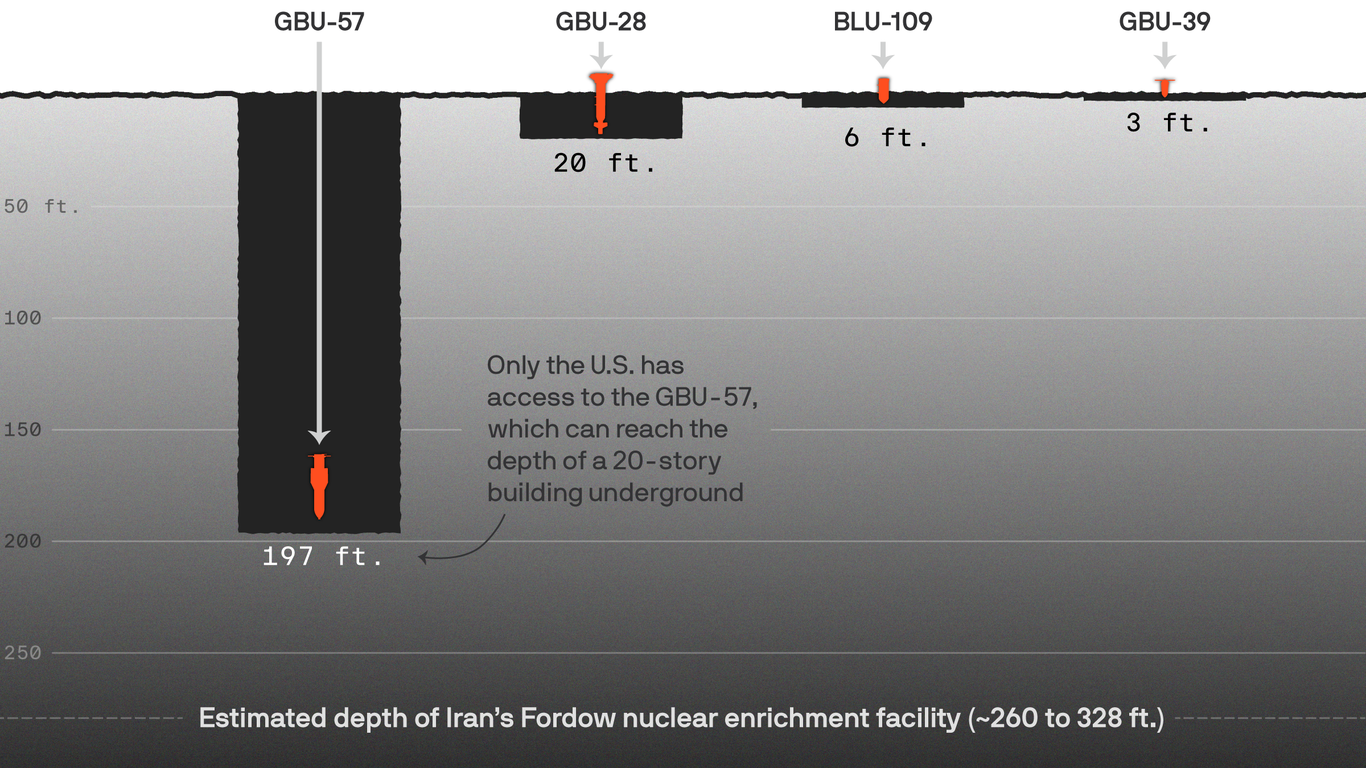A 30,000-pound bomb might be the most important weapon for Israel's war with Iran — and it's in the U.S. military's hands.
Why it matters: The U.S. alone possesses the world's most powerful non-nuclear bomb — and it's uniquely capable of targeting key Iranian facilities that Israel can't hit with its own weapons.
Zoom in: The bomb in question is 30,000 pounds and precision-guided: the GBU-57 E/B Massive Ordnance Penetrator, also known as the "MOP."
- In 2015, the U.S. Air Force said that the MOP was "designed to accomplish a difficult, complicated mission of reaching and destroying our adversaries' weapons of mass destruction located in well protected facilities."
- It's also known as the "bunker-buster."
And bunker-busting is exactly what Israel's aim is.
- Iran's Fordow facility is built into a mountain and hundreds of feet underground — the kind of fortress the MOP is designed to penetrate.
- If the facility remains accessible and intact, Iran's nuclear program — which Israel is determined to eliminate — could actually accelerate.
- "The entire operation ... really has to be completed with the elimination of Fordow," Israeli Ambassador to the U.S. Yechiel Leiter told Fox News on Friday.
Zoom out: That's where U.S. assistance — and the MOP — would come in. The bombs Israel has access to aren't nearly as strong.
- The U.S. would likely use B-2 Spirit stealth bombers to drop the bombs.
Our thought bubble: A B-2 bomber, which is capable of quietly flying extraordinary distances, dropping a MOP is about as potent as it gets — shy of nuclear power, Axios' future of defense reporter Colin Demarest said.
- Particularly relevant here is a description from the Pentagon's independent weapons tester: The MOP is "designed to attack hard and deeply buried targets (HDBTs) such as bunkers and tunnels."
What they're saying: The use of the MOP would be unprecedented.
- "To destroy Fordow, which the MOP was explicitly designed for, would probably take at least two bombs, each hitting exactly the same spot," Robert Pape, a US military historian, told the Financial Times on Wednesday.
- "That may be fine, and I am sure the US Air Force has the technical capabilities. But it's never been done before in a real war."
The latest: President Trump said Wednesday that Iran still wants to negotiate with the U.S. and proposed sending a delegation to the White House, but that it was getting "very late" for talks and he might soon authorize strikes.
- A U.S. attack would likely spark retaliation on U.S. bases and other targets in the region, potentially drawing the U.S. into a protracted conflict with Iran.
- Defense Secretary Pete Hegseth declined to provide details of U.S. military plans in Iran during an open-door Senate hearing on Wednesday. He said only that if and when Trump orders a strike, the Pentagon "will be ready to execute it."
